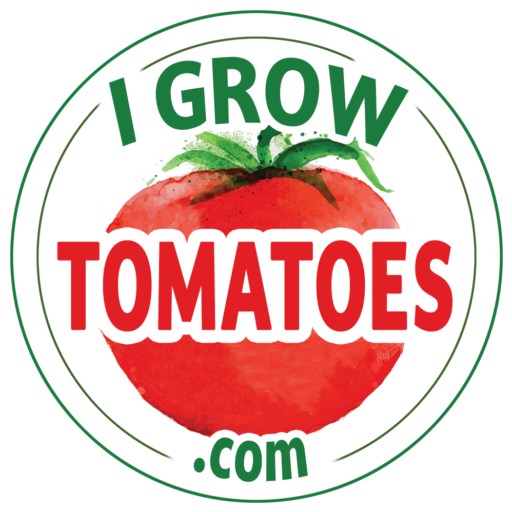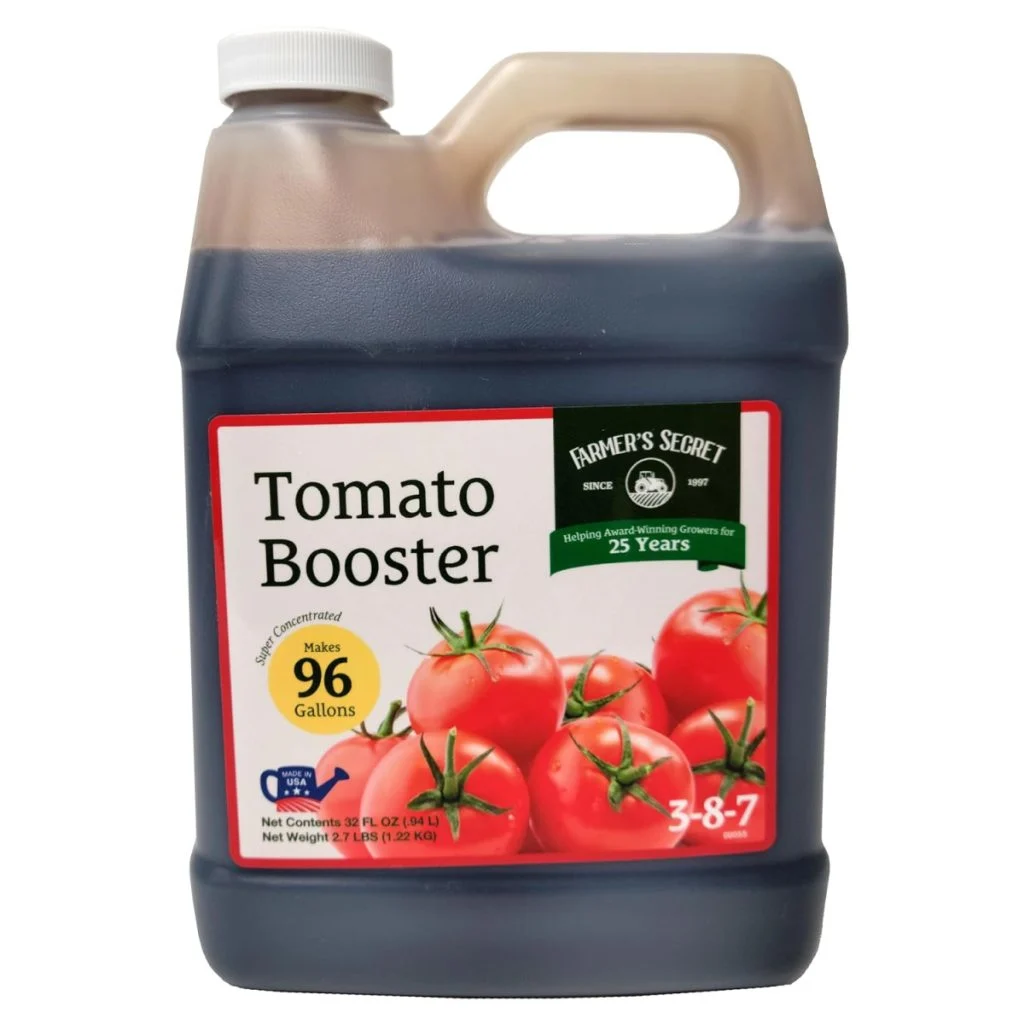Wondering how you should fertilize your tomato plants once they start producing tomatoes? Or if you should even be fertilizing at all?
It happens to many gardeners every summer – they plant their tomatoes, feed them as they grow, and then once the plants start producing fruit, they stop fertilizing altogether. At first, it might seem like the right thing to do. After all, the plants are big, green, and full of tomatoes – what more could they need?
But the truth is, once your tomato plants start producing fruit, that’s actually when they need the most support. Tomato plants use up a huge amount of energy to grow those juicy fruits. And – if you don’t help replenish what they lose, they’ll begin to slow down.
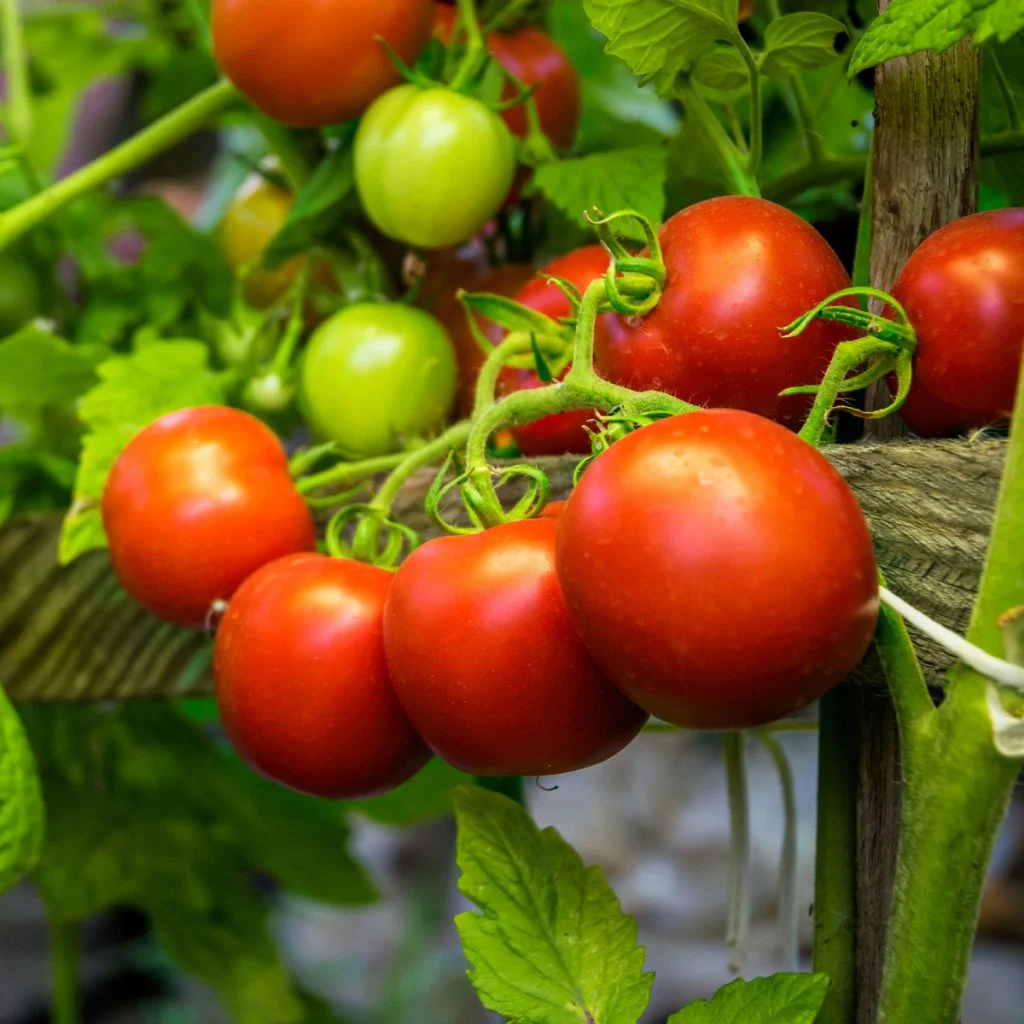
Leaves start to yellow, fruiting slows, and the plants may even become more prone to disease. If you want to keep your tomato plants going strong all the way through summer and into fall, continuing to fertilize them – and in just the right way – is the key to success!
How To Fertilize Tomato Plants Once They Start Producing
Why Tomato Plants Still Need Fertilizer After They Start Producing
When tomato plants are growing in the early part of the season, much of their energy is focused on producing foliage and growing a strong root system. During this time, feeding them with a balanced fertilizer or one slightly higher in nitrogen helps them develop strong stems and leaves.
But once they begin to flower and produce tomatoes, everything changes. At this stage, the plant’s main energy is redirected into setting fruit, ripening it, and continuing to bloom. And that process takes a toll. Every single tomato that develops pulls and uses more nutrients from the soil.
If you stop feeding your tomato plants at this critical time, they’ll slowly begin to run out of fuel. The leaves may begin to yellow, new blooms will slow or stop, and any new fruit that does form may be smaller and take longer to ripen. In the worst cases, the plant may even stop producing altogether before summer is done.
But by feeding your tomato plants consistently through the fruiting season, you can keep them healthy, blooming, and producing big, delicious tomatoes right up until the first frost. As long as you feed them the right diet of nutrients in the right way!
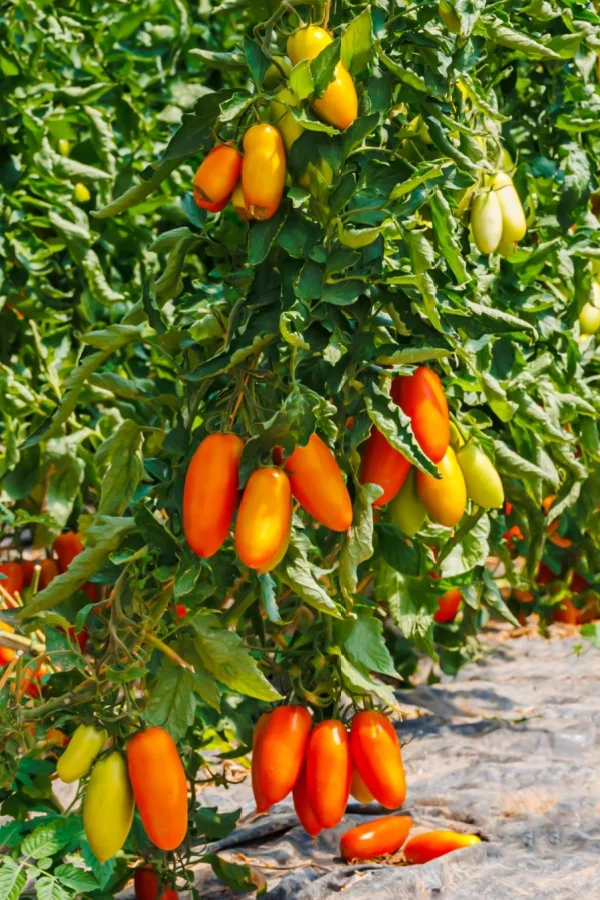
Fertilizing Tomato Plants In The Summer
Once tomatoes begin producing, the type of fertilizer you use and how you use it needs to change. In the middle of summer, the most effective way to fertilize your tomato plants is with a light dose of liquid fertilizer every 5 to 7 days.
But not just any fertilizer will do. The key is to use one that’s lower in nitrogen and much higher in phosphorus and potassium.
Look for a liquid fertilizer with a nutrient makeup where the phosphorus (P) and potassium (K) numbers are at least two to three times higher than the nitrogen (N) number. A good example would be something like a 3-6-6- or even a 3-8-7 liquid mix. Affiliate Link: Farmer’s Secret Tomato Booster Fertilizer (32oz) – Super Concentrated – 3:8:7 Ratio
Here’s why that ratio matters: Nitrogen encourages green leafy growth. That is great in early growth, but not once the plant starts producing. Too much nitrogen at this stage will make your plants grow more leaves and stems instead of focusing on flowers and fruit.
Phosphorus, meanwhile, helps stimulate strong roots and boosts the number of flowers your plant produces. More blooms means more fruit. And potassium? It’s essential for helping your tomatoes grow big and ripen properly. It also strengthens the plant and supports overall health and disease resistance too.
A lower-nitrogen, high-phosphorus, high-potassium mix will give your plants exactly what they need during the fruiting stage – less focus on green growth and more on flower and fruit production.
How to Apply Fertilizer When Tomato Plants Are Producing
Once the summer heat arrives and your tomato plants are full of blooms and fruit, they usually have massive root systems filling out their growing space – whether that’s a raised bed, a garden row, or a container.
Because of this, the roots can’t always take in large doses of fertilizer at once. Feeding a lot at one time can actually lead to fertilizer burn or runoff, which wastes nutrients and harms the plant.
That’s why small, more frequent feedings are better. Using a diluted mix of liquid fertilizer every five to seven days gives the plants just enough fuel to keep going strong without overloading them.
To do this:
- Mix your liquid fertilizer to half or even one-third of the manufacturer’s recommended strength.
- Apply it directly to the soil around the base of each plant. If you’re using containers, this is even more important, as nutrients leach out of the soil much faster with regular watering.
- If you’ve mulched around your tomato plants (which is always a great idea), gently pull back the mulch to apply the liquid directly to the soil, and then replace it afterward.
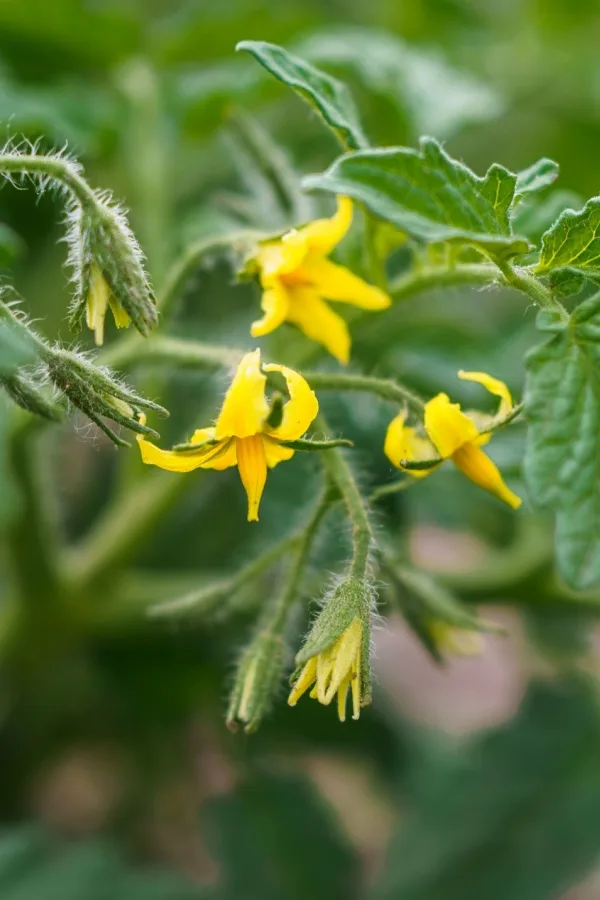
This method ensures the nutrients go where they are needed most — to the roots. It also prevents the buildup of salts in the soil, which can happen with heavy or infrequent fertilizing.
The Importance of Regular Harvesting
Fertilizing your tomato plants properly is only half the battle when it comes to keeping them producing. The other half is harvesting the tomatoes regularly — and at the right time.
A common mistake many gardeners make is waiting too long to pick their tomatoes. They want to wait until they are fully red on the vine. But in many cases, that does more harm than good.
The longer you leave ripened tomatoes on the vine, the more energy the plant uses to support them. When too many mature fruits are left on the plant, it can slow down the production of new blooms and fruits — a condition often referred to as fruit overload.
The plant senses that it has done its job of reproducing, and it begins to shut down or slow its efforts. To avoid this, it’s best to harvest your tomatoes as soon as they begin to show their ripening color. See: How To Know When To Pick Tomatoes
Once picked, you can bring the tomatoes inside and let them finish ripening off the vine. This not only reduces stress on the plant but also helps protect your fruit from cracking, pests, and animals that often go after ripe tomatoes in the garden.
I Grow Tomatoes
Follow Our Facebook Page For Even More Great Tomato Growing Tips! I Grow Tomatoes Facebook Page
I Grow Tomatoes is a website created for those who love all things about tomatoes – from planting and growing – to cooking and canning! We publish two articles every week, 52 weeks a year. Sign up today to follow via email! This article may contain affiliate links.
